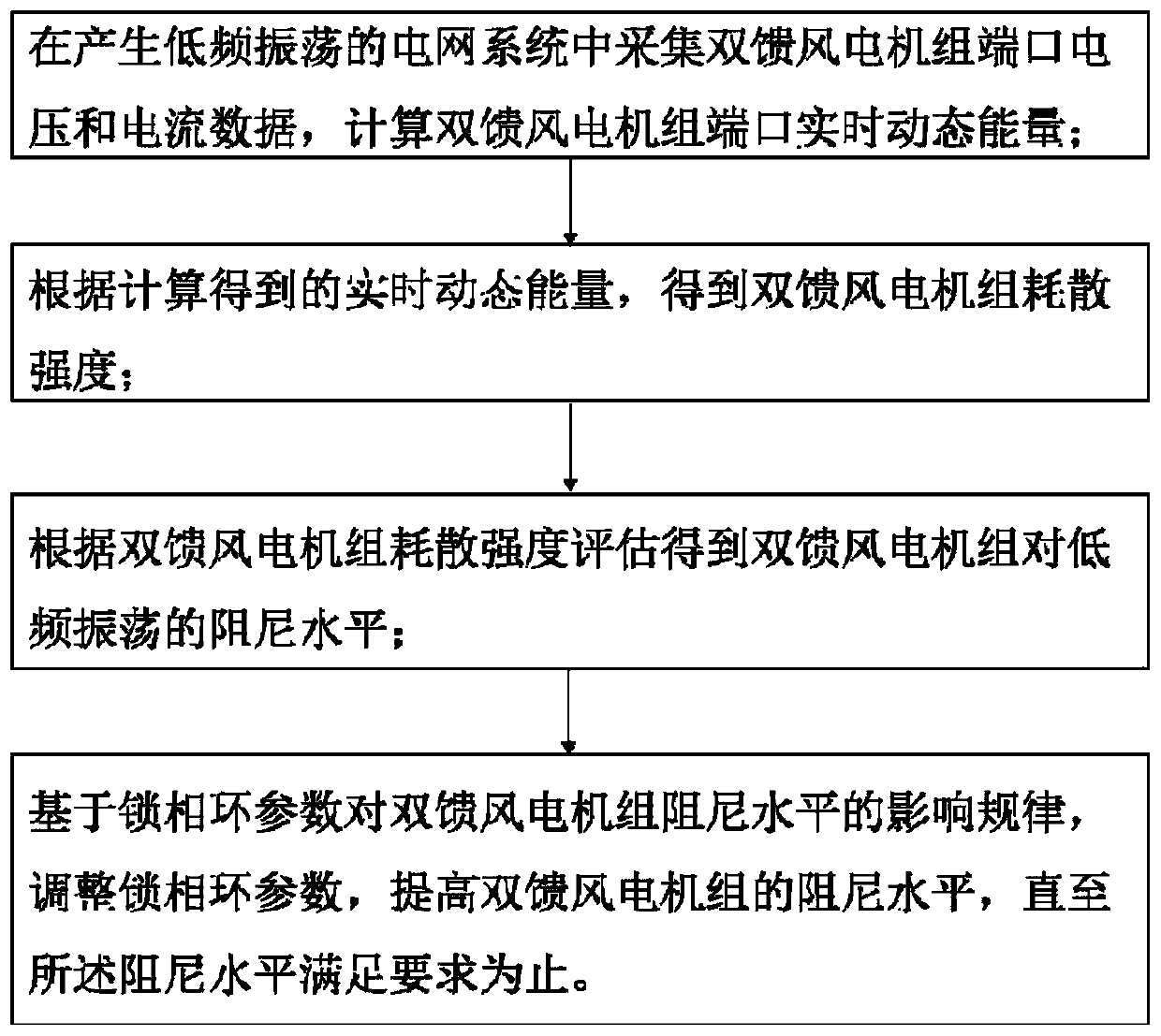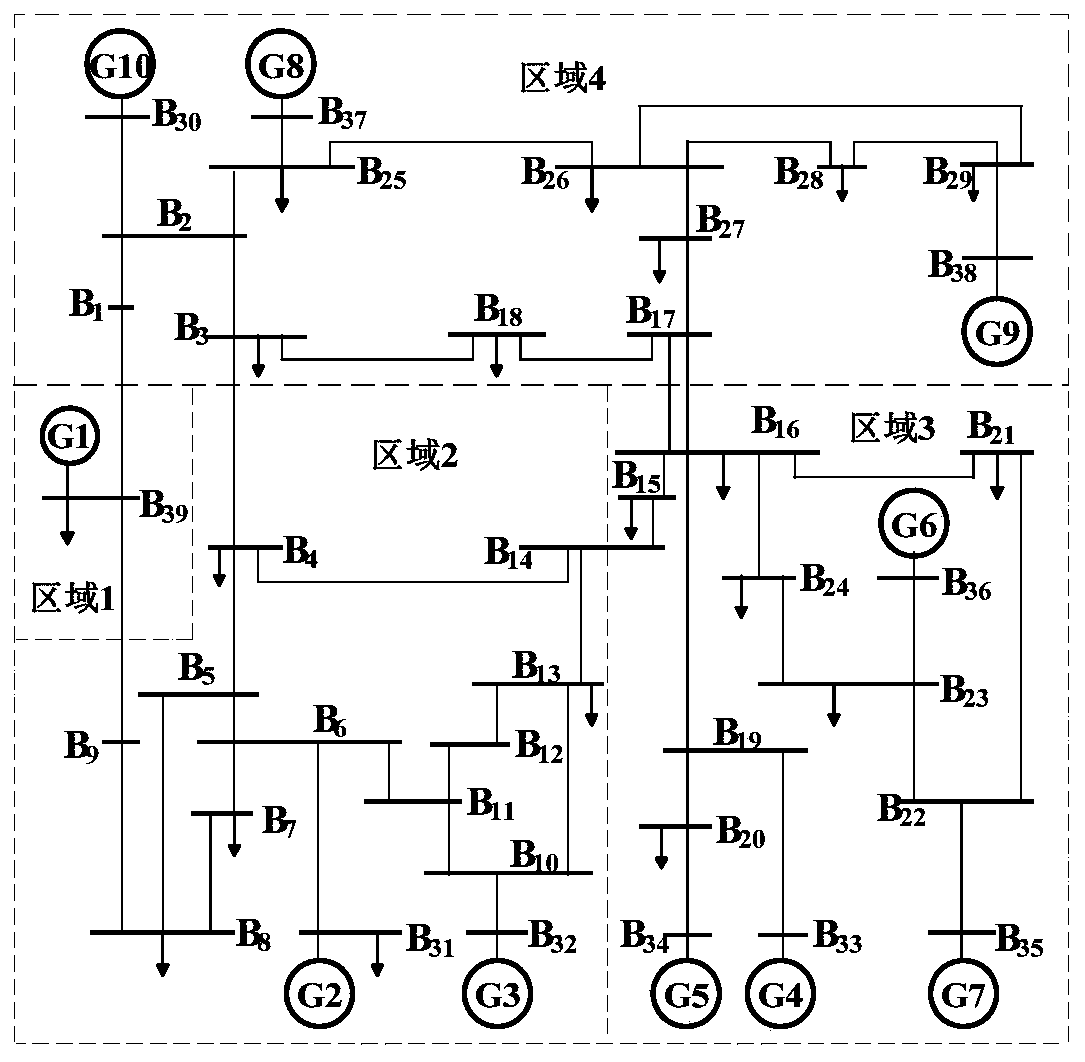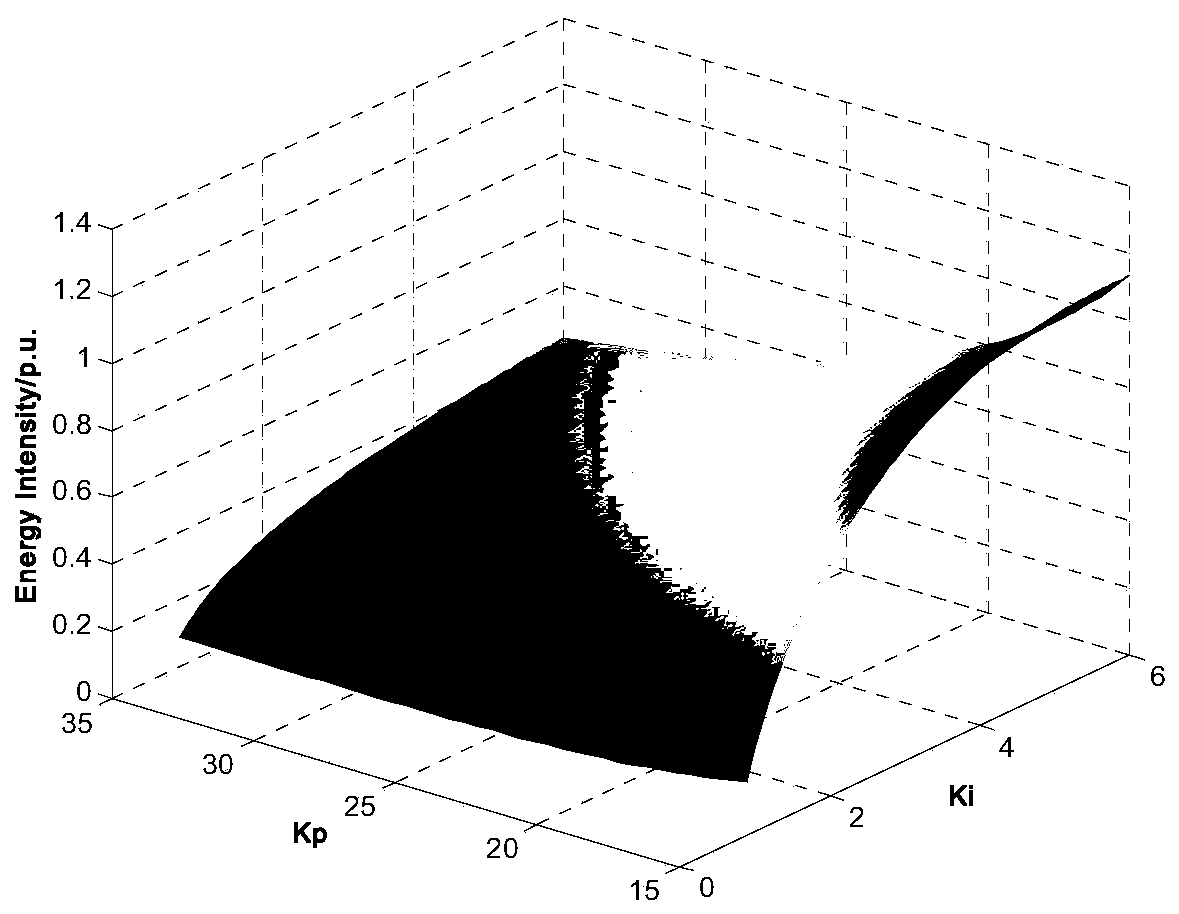Doubly-fed wind power grid-connected system stability adjustment system and method
A system stability, doubly-fed wind power technology, applied in the direction of wind power generation, single-network parallel feeding arrangement, etc., can solve the problems of dependence on state variables, system disturbance and instability, lack of research, etc., to achieve small calculation and smooth adjustment process Faster, better damping effect
- Summary
- Abstract
- Description
- Claims
- Application Information
AI Technical Summary
Problems solved by technology
Method used
Image
Examples
Embodiment 1
[0074] A stability adjustment method for doubly-fed wind power grid-connected system, the flow chart is as follows figure 1 As shown, the method includes the following steps:
[0075] Step 1: Collect the port voltage and current data of the doubly-fed wind turbine in the power grid system that generates low-frequency oscillation, and calculate the real-time dynamic energy of the doubly-fed wind turbine port;
[0076] Step 2: Obtain the dissipation intensity of the doubly-fed wind turbine according to the calculated real-time dynamic energy;
[0077] Step 3: Obtain the damping level of the doubly-fed wind turbine for low-frequency oscillation according to the evaluation of the dissipation strength of the doubly-fed wind turbine;
[0078] Step 4: Based on the influence law of the phase-locked loop parameters on the damping level of the DFIG, adjust the parameters of the PLL to increase the damping level of the DFIG until the damping level meets the requirements.
[0079] Durin...
Embodiment 2
[0167] A specific embodiment of the present invention discloses a doubly-fed wind power grid-connected system stability adjustment system, including a data acquisition module, a dissipation strength calculation module, a machine-network coupling analysis module, a result output module, and a stability adjustment module; The data acquisition module is used to collect the port voltage and current data of the doubly-fed wind turbine, and transmit it to the dissipation intensity calculation module; The dynamic energy emitted by the unit, and the non-periodic component is extracted, and the change slope of the non-periodic component is calculated as the dissipation intensity; the machine-network coupling analysis module is used to evaluate the degree of machine-network coupling and the impact of double-fed wind turbines on low-frequency oscillations. damping level, and analyze the mechanism of the phase-locked loop parameters on the dissipation intensity; the result output module is...
Embodiment 3
[0175] as figure 2 The shown New England 10-machine 39-node system is taken as an example. Considering the applicability of the present invention in different scenarios, three simulation scenarios of three-phase instantaneous short circuit, load power fluctuation, and forced oscillation are respectively set up. The scenario parameter settings are shown in Table 1.
[0176] Table 1 Simulation scene parameter settings
[0177]
[0178] The New England system can be divided into 4 major areas, among which, area 1 is composed of G1, area 2 is composed of G2 and G3, area 3 is composed of G4-G7, and area 4 is composed of G8-G10. The synchronous generator G1 in area 1 is replaced by a wind farm composed of double-fed wind turbines with virtual inertia control of equal capacity, that is, BUS39 is connected to a wind farm composed of 1000 double-fed wind turbines with a rated capacity of 1.5MW.
[0179] Run the dissipation strength analysis module, and the result is:
[0180] 1) ...
PUM
 Login to View More
Login to View More Abstract
Description
Claims
Application Information
 Login to View More
Login to View More - R&D
- Intellectual Property
- Life Sciences
- Materials
- Tech Scout
- Unparalleled Data Quality
- Higher Quality Content
- 60% Fewer Hallucinations
Browse by: Latest US Patents, China's latest patents, Technical Efficacy Thesaurus, Application Domain, Technology Topic, Popular Technical Reports.
© 2025 PatSnap. All rights reserved.Legal|Privacy policy|Modern Slavery Act Transparency Statement|Sitemap|About US| Contact US: help@patsnap.com



